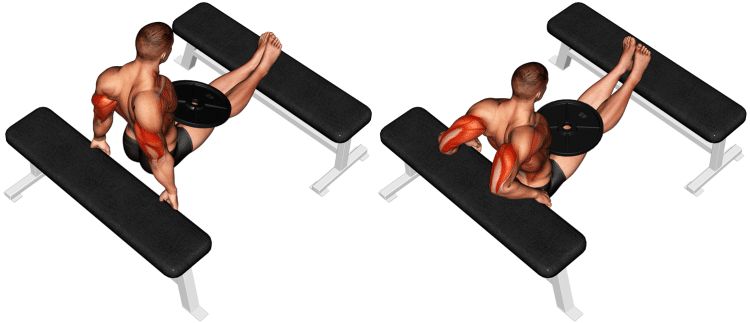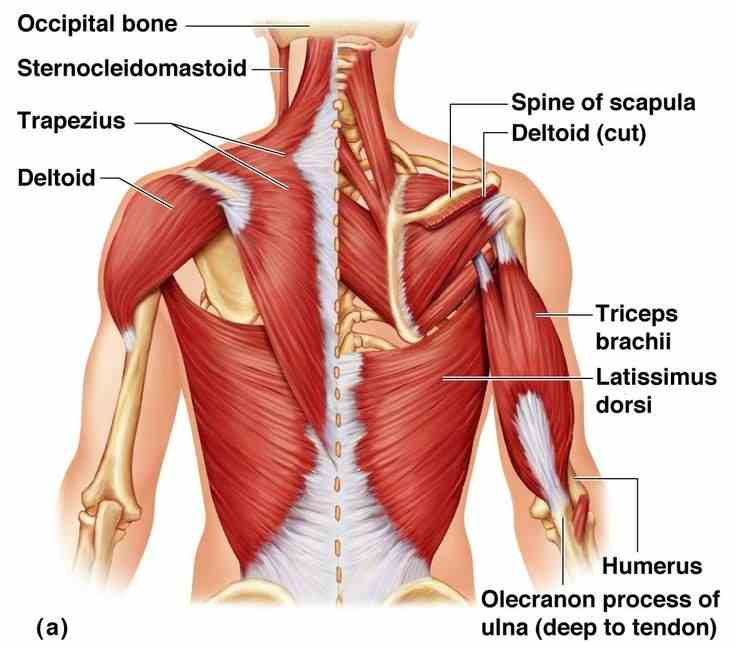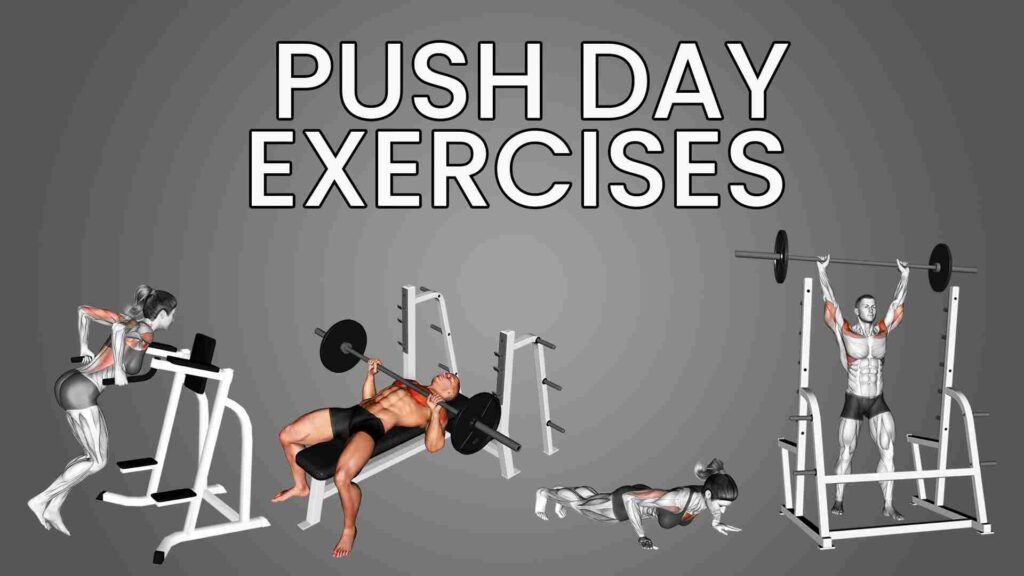Welcome to the world of strength training, where every exercise is a step towards achieving your fitness goals. Among the myriad of movements that promise to sculpt and strengthen, weighted bench dips stand out as a powerhouse for targeting the triceps. This classic compound exercise not only engages the arms but also calls upon the shoulders and chest to join the effort. Whether you’re looking to enhance your upper body strength, build muscle mass, or simply add variety to your workout routine, weighted bench dips can be a game-changer. In this article, we’ll dive into the essentials of performing weighted bench dips with precision and care, ensuring you reap the maximum benefits while keeping safety in the forefront.
What is a Weighted Bench Dip?
A weighted bench dip is a dynamic and effective upper-body exercise that primarily targets the triceps, chest, and shoulders. This compound movement involves lowering and raising your body using a stable surface, typically a bench or a set of parallel bars, with an additional challenge—added weight. This additional resistance intensifies the workout, fostering muscle growth and strength.
Advantages of Adding Weight
1. Muscle Engagement: The additional weight places greater stress on the targeted muscles, promoting more significant muscle engagement and development.
2. Progressive Overload: Weighted bench dips allow for a structured approach to progressive overload, a fundamental principle in strength training. This continuous progression contributes to continuous muscle growth.
3. Versatility: The ability to adjust the amount of weight used makes this exercise suitable for individuals at different fitness levels, from beginners to advanced.
4. Time Efficiency: With the increased intensity, weighted bench dips offer a time-efficient solution for those seeking a challenging upper body workout.
SHOP FOR THE WEIGHTED VEST ON AMAZON
In summary, the weighted bench dip is a potent variation of the traditional bench dip that introduces an extra layer of challenge through added resistance. This not only diversifies your workout routine but also provides a pathway to enhanced strength, muscle definition, and overall upper body fitness.
How to do Weighted Bench Dips?

Performing weighted bench dips is an excellent way to target your triceps, chest, and shoulders while adding an extra challenge to your workout routine. Follow these step-by-step instructions to ensure you’re getting the most out of this effective exercise:
Step 1: Set Up the Bench
- Place a sturdy bench parallel to your body.
- Ensure it can support your weight and the additional load you plan to use.
Step 2: Position Your Hands
- Sit on the edge of the bench with your hands gripping the edge.
- Make sure your fingers are facing forward and your hands are shoulder-width apart.
Step 3: Lower Your Body
- Slide your hips off the bench while keeping your feet flat on the ground.
- Lower your body by bending your elbows until they are at a 90-degree angle.
Step 4: Maintain Proper Form
- Keep your back close to the bench to target the triceps effectively.
- Ensure your elbows point straight back, not flaring outward.
- Engage your core muscles to stabilize your body throughout the movement.
Step 5: Add Weights
- For beginners, start with no additional weight and focus on mastering the form.
- Intermediate: Gradually introduce light dumbbells or a weight plate on your lap.
- Advanced: Use heavier dumbbells or increase the weight on your lap for a more challenging workout.
Form Tips to Avoid Injury
- Controlled Movement: Avoid rapid or jerky movements. Lower and raise your body in a slow and controlled manner.
- Full Range of Motion: Aim for a full range of motion by lowering your body until your elbows are at a 90-degree angle and then fully extending your arms.
- Keep Shoulders Down: Prevent shoulder strain by keeping your shoulders down and away from your ears.
- Sturdy Bench: Ensure the bench is stable and won’t tip over during the exercise.
- Comfortable Grip: Adjust your hand placement to a comfortable grip that allows you to maintain control.
Suitable Weights for Different Levels
- Beginners: Start with bodyweight only and focus on mastering the movement. Gradually progress to using light dumbbells.
- Intermediate: Introduce a weight plate or heavier dumbbells. Aim for a load that challenges you but still allows for proper form.
- Advanced: Increase the weight further, considering your strength level. You may use a weighted vest or heavier dumbbells for an intense workout.
SHOP FOR THE DIP BELT ON AMAZON
Remember to listen to your body and choose a weight that allows you to perform 8-12 repetitions with proper form. If the exercise feels too easy or too challenging, adjust the weight accordingly. Always consult with a fitness professional or healthcare provider before starting a new exercise routine, especially if you have pre-existing health conditions.
Benefits of Weighted Bench Dips
Weighted bench dips offer a range of benefits that contribute to overall upper body strength and muscle development. Incorporating this exercise into your fitness routine can yield impressive results. Here are the key advantages:
- Increased Muscle Engagement: Adding weights to your bench dips intensifies the exercise, engaging your triceps, chest, and shoulders more effectively. This increased resistance promotes muscle growth and strength development.
- Targeted Triceps Development: Weighted bench dips specifically target the triceps brachii, the muscle on the back of your arms. This can lead to enhanced triceps definition and overall arm strength.
- Versatility in Resistance: With weighted bench dips, you have the flexibility to adjust the resistance level by adding or reducing weights. This adaptability makes the exercise suitable for individuals of varying fitness levels, from beginners to advanced athletes.
- Efficient Upper Body Workout: Weighted bench dips work multiple muscle groups simultaneously, making them a time-efficient choice for those looking to maximize their upper body workout. The exercise engages the chest, triceps, and shoulders in a single movement.
- Improved Core Stability: While primarily targeting the upper body, weighted bench dips also engage the core muscles to stabilize the body during the movement. This added benefit contributes to overall core strength and stability.
- Enhanced Endurance: Performing weighted bench dips challenges your endurance, especially as you progressively increase the resistance. This can lead to improved stamina and endurance in your upper body workouts.
- Adaptable to Home Workouts: Weighted bench dips can be performed with minimal equipment, making them suitable for home workouts. All you need is a sturdy bench or elevated surface and weights, making it a convenient option for those who prefer exercising at home.
SHOP FOR THE WORKOUT GLOVES ON AMAZON
Incorporating weighted bench dips into your fitness routine provides a well-rounded approach to upper body strength and aesthetics, offering a range of benefits that contribute to overall physical fitness.
Common Mistakes to Avoid
Avoiding common mistakes is crucial to ensure that you get the most out of your weighted bench dip routine. Here are some pitfalls to steer clear of:
1. Poor Form
- Mistake: Allowing elbows to flare out, shoulders to shrug, or hips to sag during the dip.
- Correction: Maintain a straight back, keep elbows close to your body, and engage your core to stabilize your body throughout the movement.
2. Using Excessive Weight
- Mistake: Overestimating your strength and using weights that are too heavy.
- Correction: Start with a manageable weight and gradually increase as your strength improves to avoid strain on your joints and muscles.
3. Neglecting Warm-up
- Mistake: Skipping a proper warm-up before starting weighted bench dips.
- Correction: Warm up your triceps, shoulders, and chest with light exercises and stretches to prepare your muscles for the workout.
4. Inconsistent Breathing
- Mistake: Holding your breath or breathing irregularly during the exercise.
- Correction: Inhale before lowering your body, exhale as you push up. Maintain a steady breathing rhythm to enhance endurance and performance.
5. Ignoring Range of Motion
- Mistake: Not achieving a full range of motion by not lowering yourself deep enough or not extending your arms fully.
- Correction: Lower your body until your upper arms are parallel to the ground, and fully extend your arms at the top of the movement for maximum muscle engagement.
6. Relying on Momentum
- Mistake: Using momentum to lift the weights instead of relying on muscle strength.
- Correction: Perform the exercise in a controlled manner, focusing on the muscles being worked, and avoid swinging your body to lift the weights.
7. Overlooking Recovery
- Mistake: Neglecting proper recovery between sets or overtraining the triceps.
- Correction: Allow adequate rest between sets, and incorporate rest days into your overall workout routine to prevent overuse injuries.
8. Skipping Progression
- Mistake: Attempting advanced variations without mastering the basic form.
- Correction: Gradually progress by increasing weight or trying advanced variations only after achieving proper form and strength in the basic exercise.
SHOP FOR THE FITNESS TRACKER ON AMAZON
Being mindful of these common mistakes and implementing the suggested corrections will contribute to a safer and more effective weighted bench dip routine, ultimately leading to better results in your fitness journey.
Muscles Targeted

In the weighted bench dip, several key muscles are targeted, making it a highly effective exercise for overall upper body development. Understanding the muscles engaged during this exercise can help you appreciate its impact on strength and aesthetics.
1. Triceps Brachii: The triceps brachii, located at the back of the upper arm, are the primary movers during the weighted bench dip. As you extend your arms against resistance, the triceps contract, leading to increased strength and definition.
2. Pectoralis Major (Sternal Head): The sternal head of the pectoralis major, the large chest muscle, is actively engaged during the descent phase of the dip. This involvement contributes to chest development and toning.
3. Anterior Deltoids: The anterior deltoids, the front portion of the shoulder muscles, play a significant role in stabilizing and supporting the movement. Engaging the anterior deltoids adds to the overall shoulder development.
4. Rhomboids and Levator Scapulae: The rhomboids and levator scapulae, muscles located in the upper back and neck region, are activated to stabilize the shoulder blades. This engagement enhances posture and shoulder stability.
5. Serratus Anterior: The serratus anterior, situated on the sides of the chest, is involved in the stabilization of the shoulder blades as you perform the weighted bench dip. This engagement contributes to overall shoulder health.
6. Latissimus Dorsi (Stabilizing Role): While not the primary mover, the latissimus dorsi, or lats, are engaged to some extent, especially during the stabilization phase of the exercise. This involvement supports mid-back strength.
Understanding the specific muscles targeted in weighted bench dips allows you to tailor your workout routine to address these areas effectively. Whether your goal is to build triceps strength, enhance chest definition, or improve overall upper body stability, incorporating weighted bench dips can be a game-changer.
Progression Tips
Progression in the context of weighted bench dips refers to the systematic and gradual increase in the difficulty or intensity of the exercise over time. This ensures that your muscles are continually challenged, promoting growth, strength, and overall fitness improvement. Here are some progression tips for weighted bench dips:
- Start with Bodyweight Dips: If you’re new to weighted bench dips, begin by mastering the exercise with just your body weight. Focus on perfecting your form and building a strong foundation.
- Gradual Weight Increase: Once you’re comfortable with bodyweight dips, slowly introduce additional weight. Start with a modest amount and gradually increase the load as your strength improves. This can be achieved by using a weight belt, holding a dumbbell between your legs, or using a weighted vest.
- Monitor Repetitions: Pay attention to the number of repetitions you can comfortably perform with a particular weight. As your strength increases, aim to gradually increase the number of reps or sets.
- Varied Tempo: Experiment with different tempos during the exercise. Slow down the lowering phase (eccentric) and focus on controlled movements to increase time under tension, promoting muscle growth.
- Advanced Variations: Once you’ve mastered basic weighted bench dips, consider incorporating advanced variations. This might include using unstable surfaces, changing hand positioning, or exploring other dip variations to keep your workouts challenging.
- Supersetting: Combine weighted bench dips with other upper body exercises in a superset. This can intensify your workout and contribute to overall muscle development.
- Regular Assessment: Periodically assess your progress and adjust your weights accordingly. This might involve increasing the weight, changing the number of sets and reps, or modifying other variables to keep the workout challenging.
- Rest and Recovery: Ensure proper rest and recovery between sessions to allow your muscles to repair and grow. Overtraining can hinder progress, so listen to your body and adjust your workout frequency accordingly.
SHOP FOR THE FOAM ROLLER ON AMAZON
Remember, the key to effective progression is patience and consistency. Rushing into heavy weights too quickly can lead to injury, so it’s crucial to listen to your body, progress at a sustainable pace, and enjoy the journey of continuous improvement.
FAQs
Q 1. Are weighted bench dips suitable for beginners?
Ans. Yes, but it’s crucial to start with lighter weights and focus on mastering proper form. Gradually increase the weight as your strength improves.
Q 2. Can I perform weighted bench dips at home?
Ans. Absolutely! You can use household items like dumbbells or improvise with weighted backpacks to add resistance. Ensure you have a stable surface for the bench dip.
Q 3. Can weighted bench dips help with weight loss?
Ans. While weighted bench dips primarily target muscle strength, incorporating them into a comprehensive workout routine can contribute to overall calorie burn, supporting weight loss.
Q 4. What is the difference between parallel bar dips and weighted bench dips?
Ans. Parallel bar dips involve vertical movement, engaging the chest and shoulders more. Weighted bench dips primarily target the triceps and offer a different range of motion.
Q 5. Can I perform weighted bench dips with pre-existing shoulder issues?
Ans. If you have shoulder concerns, it’s advisable to consult with a healthcare professional or fitness expert before attempting weighted bench dips. Consider starting with lighter weights and focus on pain-free range of motion.
Q 6. Can I use a stability ball for weighted bench dips?
Ans. While a stability ball adds an element of instability, it’s not recommended for weighted bench dips due to the potential safety risks. Stick to a stable bench or platform for this exercise.
Conclusion
In conclusion, the weighted bench dip stands as a powerhouse exercise for sculpting your upper body and enhancing overall strength. By adding resistance to this simple yet effective movement, you can unlock a new realm of gains and achieve the toned triceps and chest you’ve been striving for.
Remember, proper form is paramount to avoid injury and maximize results. Whether you’re a beginner looking to kickstart your fitness journey or a seasoned gym enthusiast seeking a challenging addition to your routine, the weighted bench dip is a versatile and rewarding exercise.

Good day, and welcome to Fitthour. My name is Shubham Vijay, and I am a certified personal trainer and nutrition coach with 6 years of experience in the fitness industry. At Fitthour, we specialize in types of training, such as strength training, cardio, or HIIT, and our mission is to help clients achieve their fitness goals and improve their overall health.




